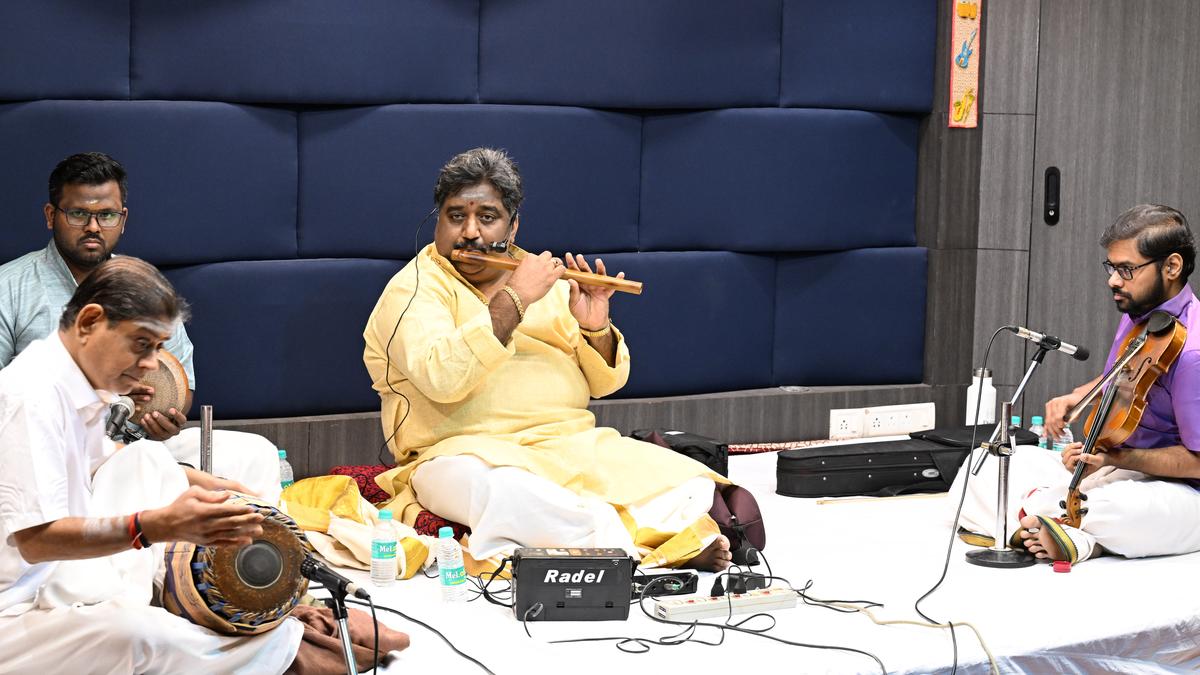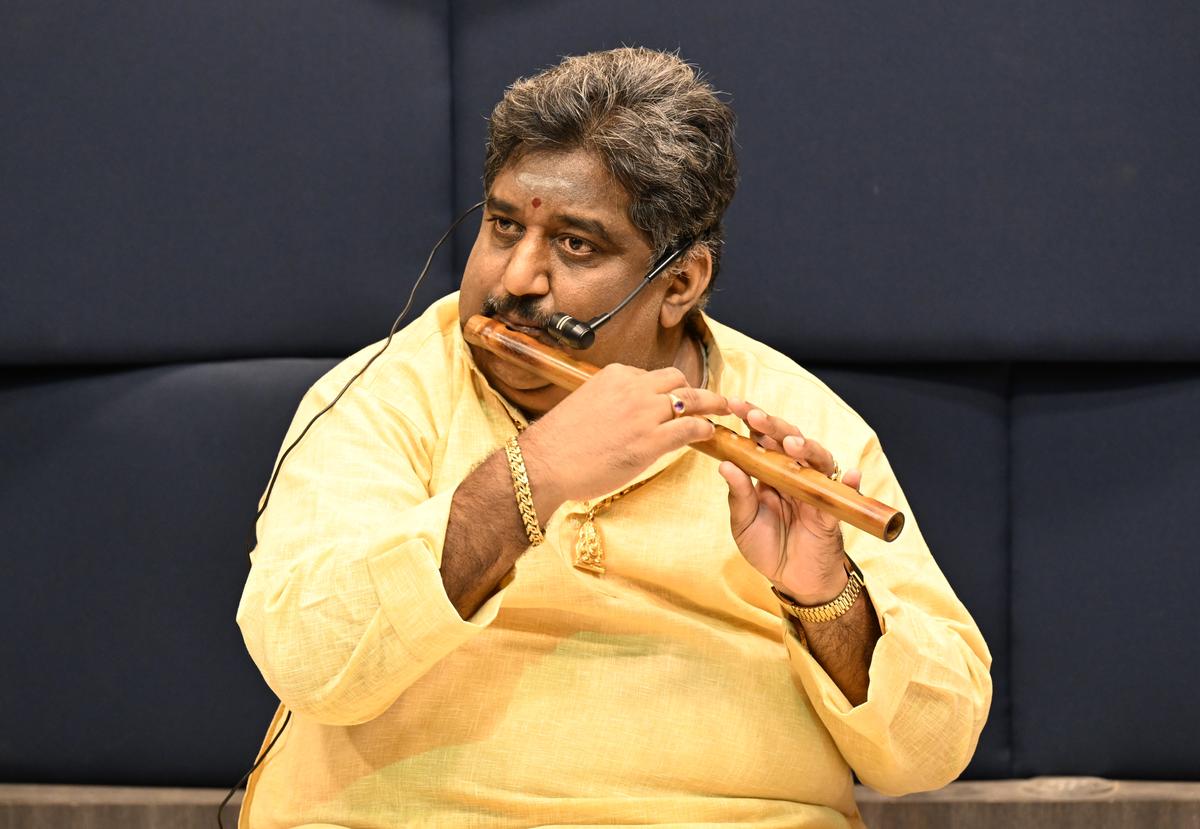
Palakkad K.L. Sreeram with M. Vijay (violin), R. Ramesh (mridangam) and Sunil Kumar (kanjira) performing at the Madhuradhwani’s Flute Mali’s Remembrance day concert, that took place at Arkay Convention Centre, Mylapore.
| Photo Credit: JOTHI RAMALINGAM B
Palakkad Sreeram, who is a versatile musician and playback singer recently presented a flute recital for Madhuradhwani. The concert was organised in remembrance of maestro T.R. Mahalingam alias Flute Mali. Sreeram, who is a self-taught flautist considers N. Ramani his manasika guru.
Over the last century, innovations have been made to make the flute more suitable for Carnatic music. From Sarabha Sastri, Tirupamburam Swaminatha Pillai and Sanjeeva Rao to Flute Mali and N. Ramani, each exponent of the instrument made their own unique contributions. Sreeram developed the ‘singing flute’, which enables finer musical nuances to be played on the flute with an additional tone-hole for the thumb while another was shrunk for the same purpose.
Sreeram began his concert with Muthuswami Dikshitar’s ‘Sree mahaganapathi’ in Gowlai. Ending the kriti with some brisk kalpanaswaras, the flautist proceeded to Tyagaraja’s magnum opus ‘Endharo mahanubhavulu’ in Sree raga. Listening to both the pieces, one realised Sreeram’s efforts in coming up with a detailed presentation of the ragas.
Attention to detail
The pleasant naadam of the instrument combined with Sreeram’s attention to detail using appropriate prayogas in the ragas lent an edge to the concert. He chose the 71st melakarta raga Kosalam for alapana. Beginning the alapana with a set of phrases that deceptively resembled Kalyani, Sreeram went on to introduce the jeeva swara of the raga, which is the shatshruthi rishabham, to highlight its prominence. He skilfully performed grahabedam, shifting the notes to yield other melakarta ragas such as Keeravani and Hemavathi. The violinist M. Vijay in turn presented an alapana that was equally intricate. Koteeswara Iyer’s ‘Ka guha shanmukha’ was the kriti.

Flute Mali’s Remembrance Concert by Palakkad K.L. Sreeram at Arkay Convention Centre, Mylapore.
| Photo Credit:
JOTHI RAMALINGAM B
Moving on to Keeravani, which was the main raga for the evening, Sreeram rendered an engaging, long alapana incorporating the many facets of the raga. A set of winding phrases centred around the rishabham across octaves stood out. Every phrase challenged the violinist and Vijay creatively matched up to Sreeram in every way possible.
Fresh perspectives
Sreeram exploits the instrument to bring in fresh perspectives in manodharma and this ensures that his music reaches the audience well, which is a necessity for any instrumental performance.
The main composition was Surajananda Swamigal’s ‘Samaganapriyakaram’, which was tuned by the renowned vocalist and musicologist T.M. Thyagarajan. Set in Misra Chapu, the chittaswaram in the anupallavi is one of the special features of this piece. Both the Kosalam piece as well as this composition are relatively less heard. Hence were good choices to offer variety to the rasikas. Mridangam was played by R. Ramesh and kanjira by Sunil Kumar. The accompanists provided fine support and presented an admirable thani avarthanam, which proved to be appealing to listeners since the tala was Misra Chapu. Sreeram ended the concert with a thillana in raga Bindumalini and ‘Bhaja bhaja manasa’ in Sindhubhairavi.




